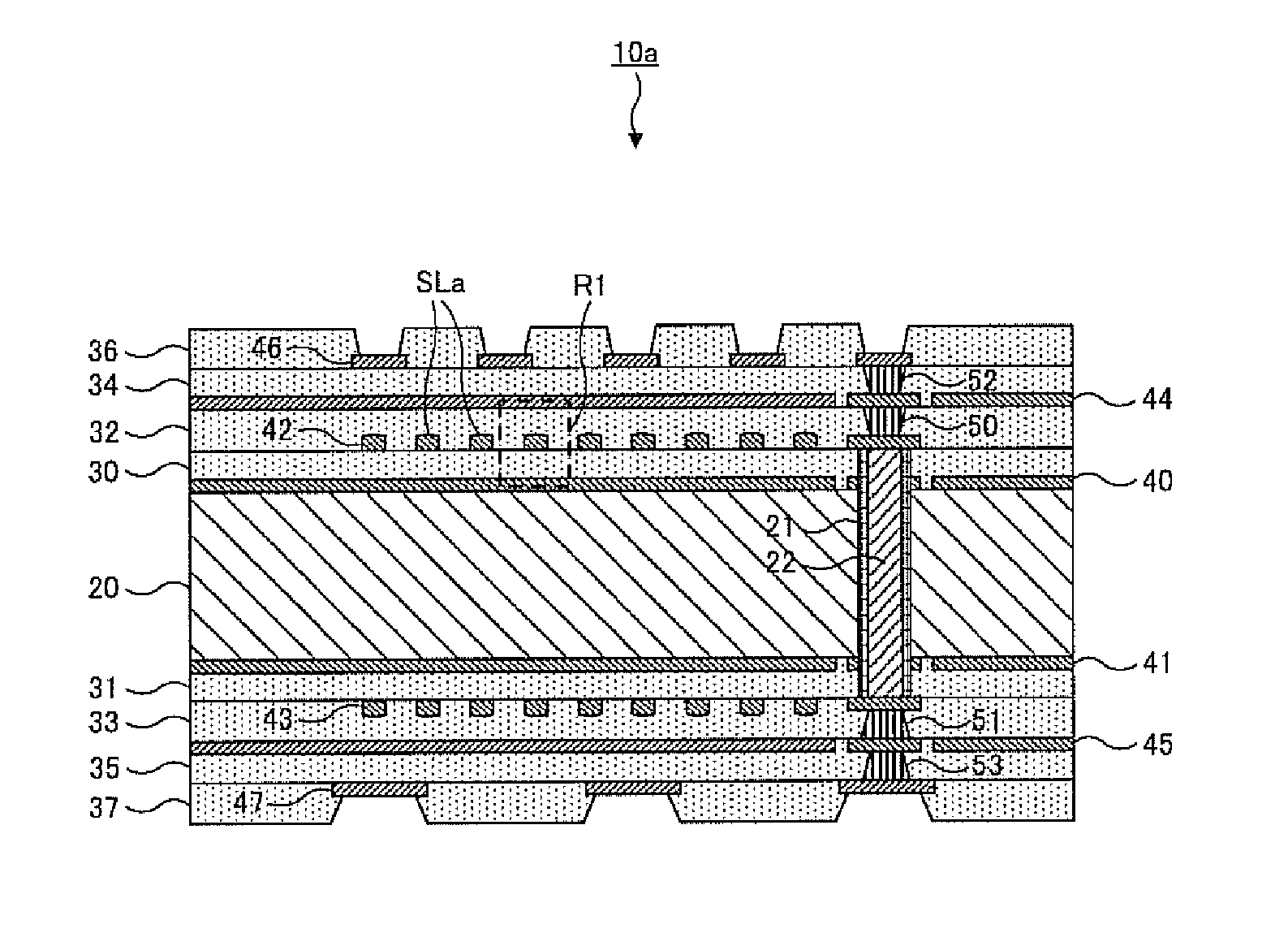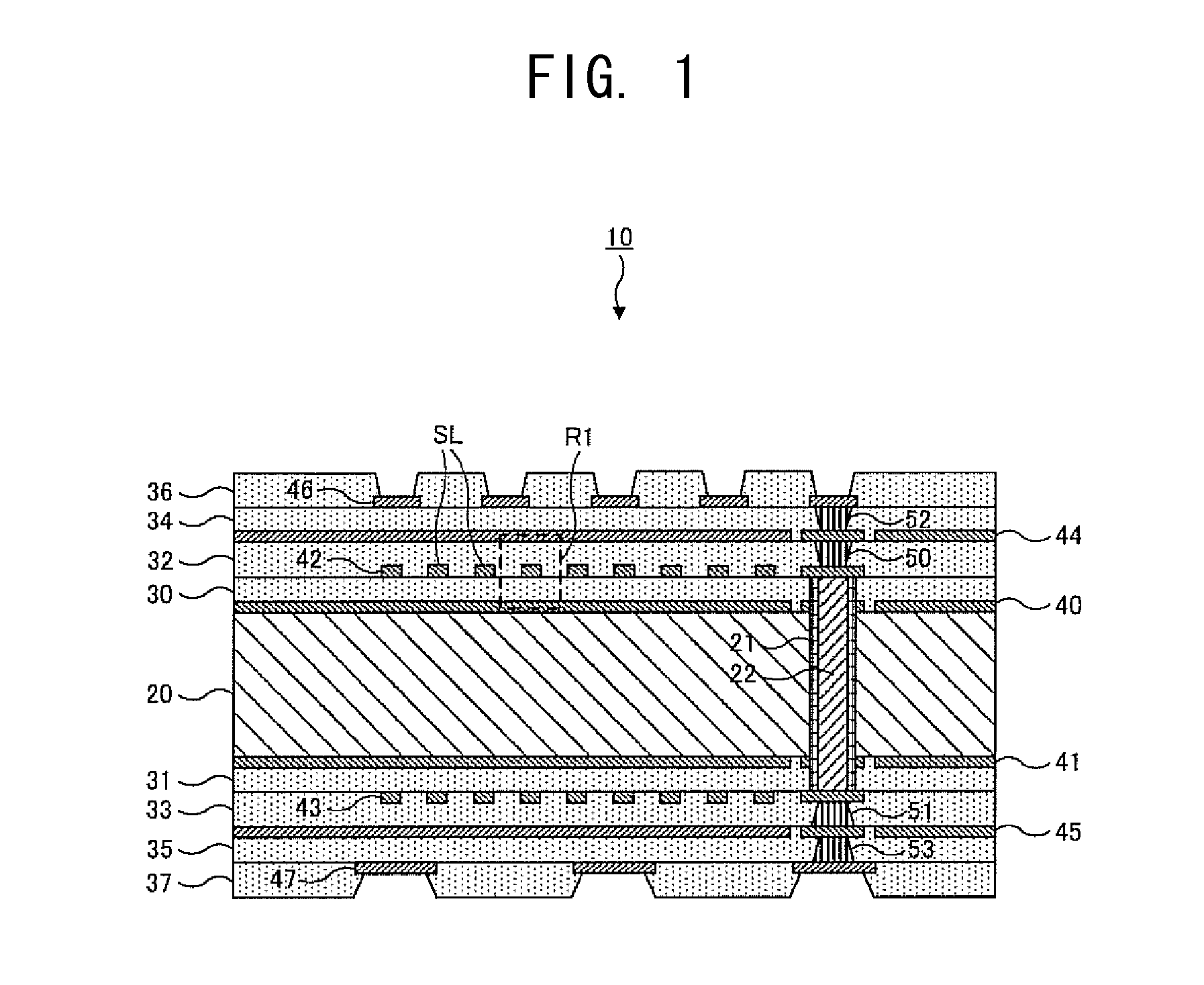Wiring substrate and method of manufacturing the same
a wiring substrate and manufacturing method technology, applied in the direction of superimposed coating process, printed circuit aspects, coatings, etc., can solve the problems of affecting the application of such a wiring substrate to desired high-frequency applications, affecting the effect of preventing deterioration of high-frequency characteristics, and affecting the adhesion reliability. to achieve good high-frequency characteristics, improve the effect of adhesion reliability, and simplify the surface modification step
- Summary
- Abstract
- Description
- Claims
- Application Information
AI Technical Summary
Benefits of technology
Problems solved by technology
Method used
Image
Examples
first embodiment
[0039]A signal line layer 42, which is a conductor layer, is formed on the surface of the insulating layer 30. This signal line layer 42 includes a large number of signal lines SL for transmitting high-frequency signals. Also, a signal line layer 43, which is a conductor layer, is formed on the surface of the insulating layer 31. This signal line layer 43 has the same structure as the above-described signal line layer 42. The upper end and lower end of the through hole conductor 21 are connected to conductor traces of the signal line layers 42 and 43, respectively. The wiring substrate 10 of the first embodiment is characterized in that, in order to attain satisfactory high-frequency characteristics and satisfactory adhesion reliability, a silane coupling treatment is performed on the signal line layers 42 and 43 so as to form flat surfaces. The specific structure and action of the signal line layers 42 and 43 will be described later.
[0040]A conductor layer 44 is formed on the surfa...
second embodiment
[0063]Since the signal line SLa has a curve cross-sectional shape such that the top surface S2a of the signal line SLa projects upward as shown in FIG. 13, concentration of stress at a corner portion of the signal line SLa can be mitigated. That is, the signal line SLa, which is formed of a metallic material, is surrounded by the insulating layers 30, 32 formed of a resin material, and thermal stress acts on the signal line SLa due to a difference in coefficient of thermal expansion therebetween. Since this thermal stress concentrates on corner portions of the cross-sectional structure of the signal line SLa where the top surface S2a perpendicularly intersects the side surfaces S3, S4, resin cracking may occur near the corner portions. In the second embodiment, the top surface S2a having a convex cross section is formed in a plating step to be described later, whereby opposite corner portions have obtuse angles greater than a right angle, to thereby mitigate concentration of stress ...
PUM
| Property | Measurement | Unit |
|---|---|---|
| surface roughness | aaaaa | aaaaa |
| surface roughness Ra | aaaaa | aaaaa |
| surface roughness | aaaaa | aaaaa |
Abstract
Description
Claims
Application Information
 Login to View More
Login to View More - R&D
- Intellectual Property
- Life Sciences
- Materials
- Tech Scout
- Unparalleled Data Quality
- Higher Quality Content
- 60% Fewer Hallucinations
Browse by: Latest US Patents, China's latest patents, Technical Efficacy Thesaurus, Application Domain, Technology Topic, Popular Technical Reports.
© 2025 PatSnap. All rights reserved.Legal|Privacy policy|Modern Slavery Act Transparency Statement|Sitemap|About US| Contact US: help@patsnap.com



